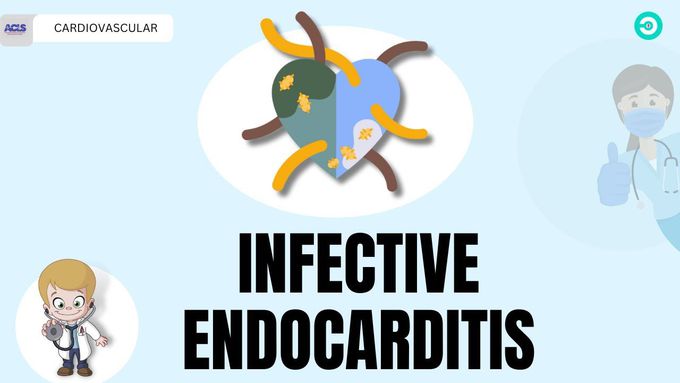


Infective Endocarditis: pathophysiology, symptoms, diagnosis & Treatment
Welcome to our YouTube video on "Endocarditis: Causes, Symptoms, and Treatment Options." In this informative video, we will delve into the details of endocarditis, a serious medical condition affecting the heart's inner lining. Discover the underlying causes, common symptoms, and various treatment options available for managing this condition. #Endocarditis #HeartHealth #healtheducation @ecgkid 📋 Timestamps: 0:00 Introduction 0:12 What is Endocarditis? 0:34 Pathophysiology 2:16 Symptoms 2:35 Diagnosing Endocarditis 3:29 Treatment Options 🔍 Endocarditis is a critical condition that occurs when the inner lining of the heart, known as the endocardium, becomes infected. This video provides an in-depth exploration of this condition, covering everything from its causes and risk factors to the diagnosis and available treatment options. 🔍 Learn about the factors that contribute to the development of endocarditis, including bacterial and fungal infections, as well as risk factors such as pre-existing heart conditions, intravenous drug use, and dental procedures. 🔍 Recognizing the symptoms of endocarditis is crucial for early detection and treatment. We discuss the common signs to look out for, such as persistent fever, fatigue, shortness of breath, and joint pain, among others. 🔍 Discover the diagnostic methods employed by healthcare professionals to identify endocarditis accurately. From physical examinations and blood tests to echocardiography and imaging techniques, we explain how these tests help in confirming the diagnosis. 🔍 Treatment options for endocarditis vary depending on the severity of the infection. This video highlights the different approaches, including antibiotic therapy, surgical intervention, and the use of prosthetic valves. 🔍 Prevention is key when it comes to endocarditis. We provide valuable insights into preventive measures, such as practicing good oral hygiene, maintaining a healthy lifestyle, and adhering to recommended antibiotic prophylaxis guidelines for high-risk individuals. Join us on this educational journey as we explore the intricacies of endocarditis, from its causes and symptoms to the available treatment options and preventive measures. Don't miss out on this valuable information that can help you understand this condition better and promote heart health. Remember to like, share, and subscribe to our channel for more insightful videos on various medical topics. Stay informed, stay healthy! About Our Channel Our channel is about medical educational videos and online medical courses. We cover lots of cool stuff, such as emergency medicine, ECG, cardiology, and clinical medicine, as well as various other disorders and disorders of anatomy and physiology, along with cardiology and medicine (fields of study). Check out our channel here: Don’t forget to subscribe! FIND US AT https://www.ecgkid.com/ FOLLOW US ON SOCIAL Get updates or reach out to get updates on our social media profiles! Twitter: https://twitter.com/ecgkid Facebook: https://facebook.com/ecgkid Instagram: https://twitter.com/ecgkid Spotify: http://spotify.com/ecgkid

